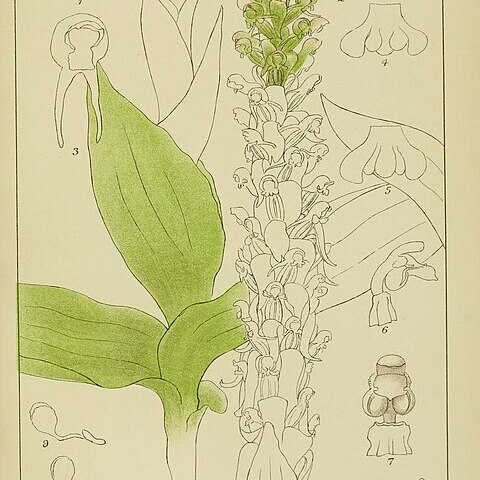Plants terrestrial, fairly robust, 0.15-1.30 m high. Leaves absent at flowering time, later 2-4. Basal, on sterile shoot, elliptic to broadly ovate, spreading, 10-330 mm long. Inflorescence lax to dense, 20-106-flowered; bracts deflexed. Flowers small, yellowish green, suffused brownish, olive to maroon, petals dry to brown shortly after anthesis. Sepals: median sepal 2-4 mm long, obovate-truncate; lateral sepals obovate, falcate, slightly longer. Petals narrowly obovate, minutely papillose. Lip subovoid with galea entrance very small; spur 5-15 mm long. Flowering time Dec.-Mar.
Slender or robust, tuberous geophyte to 30 cm, sometimes leafless. Leaves (if present) 2-4, on a separate shoot, elliptic to broadly ovate, bracts deflexed. Flowers many in a lax to dense raceme, yellowish green to maroon, petals drying shortly after anthesis, sepals 2-4 mm long, lip with small entrance and spurs 5-15 mm long.
Herb, up to 1.3 m high. Leaves variable. Flowers: free parts of petals ± 1 mm long, withering to brown shortly after anthesis; lip subovoid with a small aperture; apical flap minute; spurs 5-15 mm long, curved away from ovary at first; perianth yellowish green, tinged olive to dark maroon; Dec.-Apr.
Terrestrial herb, up to 1.3 m high. Free parts of petals withering to brown shortly after anthesis. Lip egg-shaped with a small aperture. Spurs 5-15 mm long, curved away from ovary at first. Flowers yellowish green, tinged olive to dark maroon.

